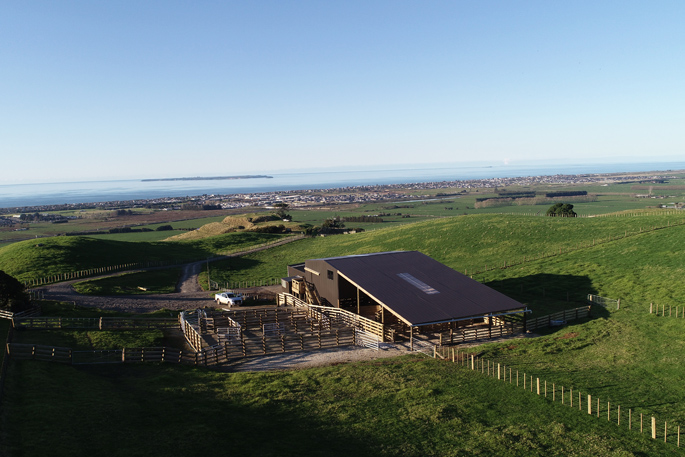A new woolshed with covered yards and adjacent cattle yards have been constructed at Papamoa Hills – known as Te Rae o Papamoa – regional park to allow for a transition from predominantly beef and dairy grazing to mainly sheep.
The move towards sheep farming is seen as a lower impact option for Papamoa Hills’ ridgetops and spurs, says Bay of Plenty Regional Council’s senior projects officer Courtney Bell.
“New farm infrastructure was required following a change in the park’s grazing lessee in June 2018. The former lessee used their own farm infrastructure located on adjacent private land. This is not available for future use by BOPRC.”
Courtney says farming is an important park management tool that facilitates the protection and conservation of cultural heritage features – and the aim is to now move into farming 80 per cent sheep and 20 per cent cattle in the next few years.
“The total park size is 175ha – and 112ha of this is effective grazing area. Currently, we’re running 300 lambs, 200 ewes, 35 R1 beef cattle, 35 R2 beef cattle, 70 R1 dairy grazers.
“It will take a few years to build sheep numbers.”
The new infrastructure was built in the last few months, following obtaining resource consent and undertaking a visual and archaeological impact assessment to gauge how the building would look in this landscape.
In the last decade BOPRC has selectively retired the steepest and wettest parts of the farm and replanted with native species. “Native revegetation of marginal farmland is programmed to continue for at least another 10 years,” says Courtney.
“And there is further work to be done on improving the stock water drinking supply to become more resilient during summer drought.”
Papamoa Hills is a nationally significant archaeological landscape. There are 1630 recorded archaeological features associated with eight pa sites within the park boundary.
Park management involves balancing values from farming to biodiversity, archaeological and cultural to recreational and landscape, says Courtney.
“BOPRC works alongside representatives from Ngati He, Nga Potiki, Waitaha and Nga Pukenga to make decisions around management issues that may affect cultural values of the landscape.”



0 Comments
Leave a Comment